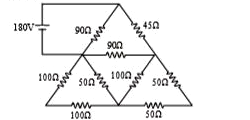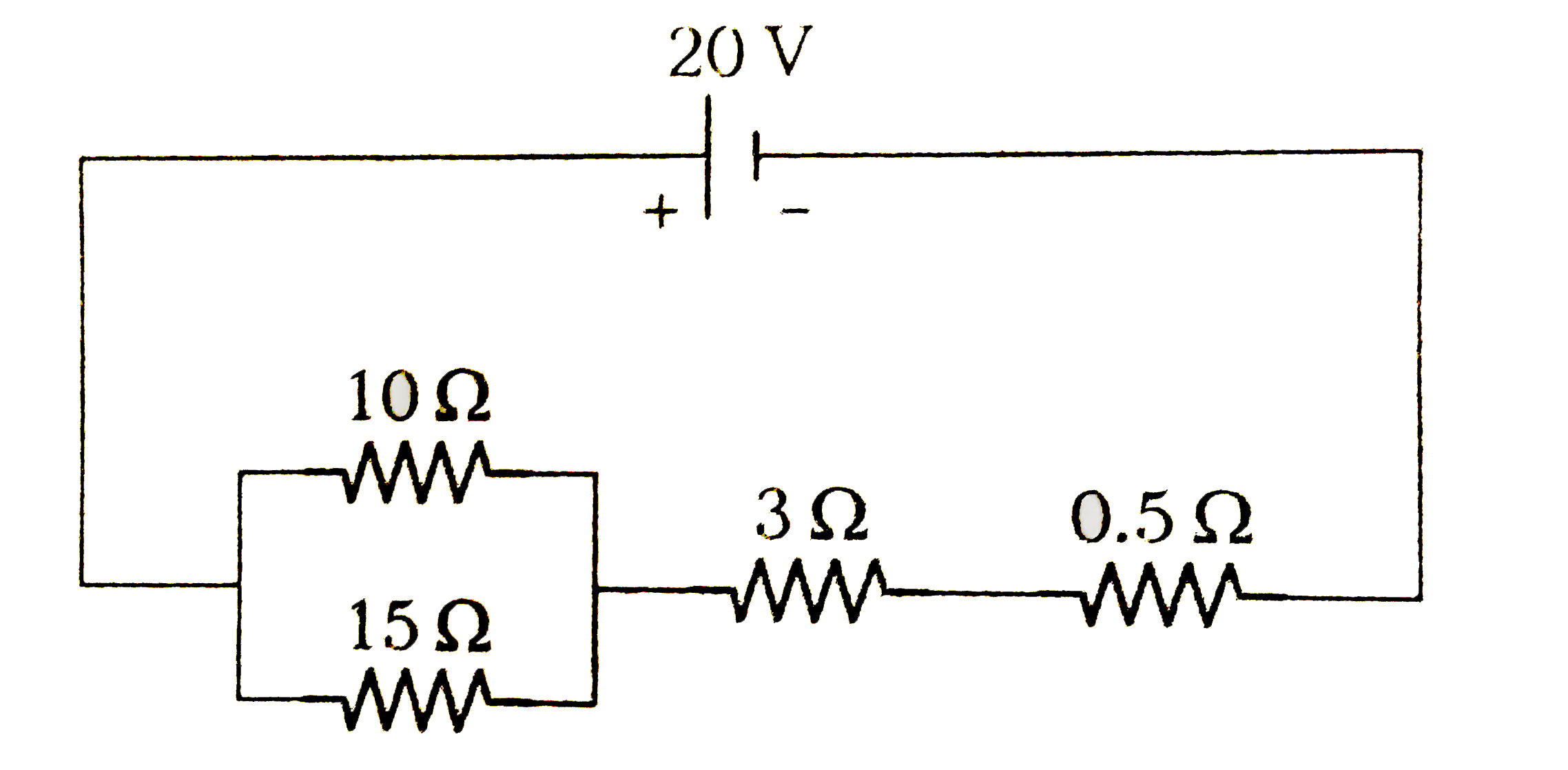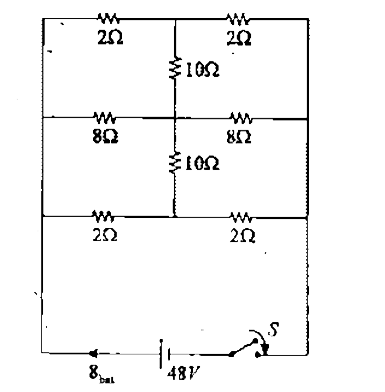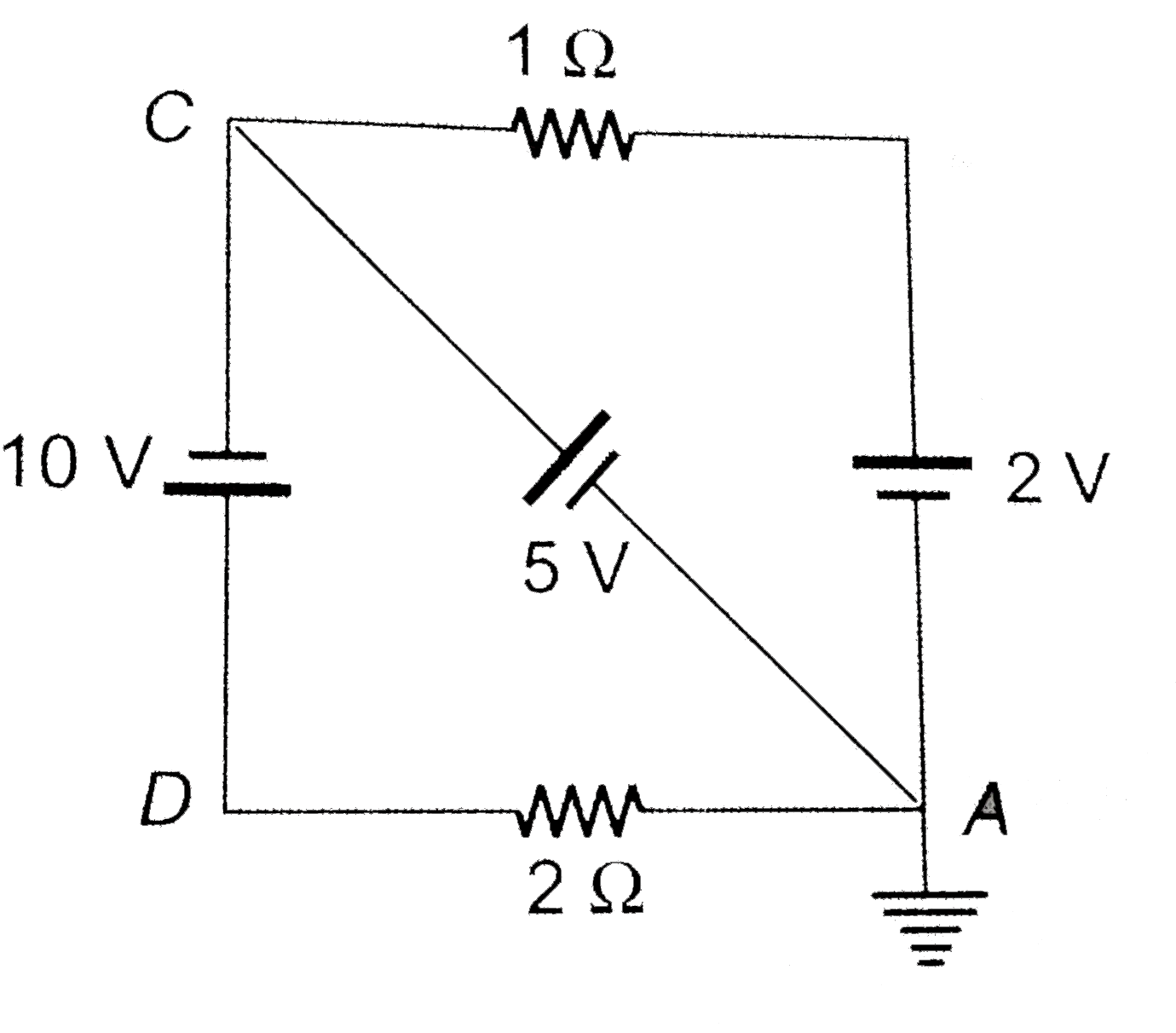In the circuit shown in figure find the potentials of A,B,C and D and the current through 1Ω and 2Ω resistance.

Video Solution
Text Solution
The correct Answer is:A, B, C, D
VA=0V (as it is earthed)
VC−VA=5V
∴VC=5V
VB−VA=2V
∴VB=2V
VD−VC=10V
∴VD=10+VC=15V
i2Ω=VC−VB1=3A from C to B as VC>VB
i1Ω=VC−VB2=7.5A from C to B is VC>VB
i2Ω=(VD−VA)
|
Topper's Solved these Questions
- CURRENT ELECTRICITYBOOK - DC PANDEYCHAPTER - CURRENT ELECTRICITYEXERCISE - Exercise 23.7
1 Videos
- CURRENT ELECTRICITYBOOK - DC PANDEYCHAPTER - CURRENT ELECTRICITYEXERCISE - Exercise 23.8
3 Videos
- CURRENT ELECTRICITYBOOK - DC PANDEYCHAPTER - CURRENT ELECTRICITYEXERCISE - Exercise 23.5
2 Videos
- COMMUNICATION SYSTEMBOOK - DC PANDEYCHAPTER - COMMUNICATION SYSTEMEXERCISE - Subjective
11 Videos
- ELECTROMAGNETIC INDUCTIONBOOK - DC PANDEYCHAPTER - ELECTROMAGNETIC INDUCTIONEXERCISE - Medical entrances gallery
25 Videos
Similar Questions
Knowledge Check
In the circuit shown in the figure, find the current in 45Ω
 A4AB2.5 AC2ADNone of these
A4AB2.5 AC2ADNone of theseIn the circuit shown in figure potential difference between point A and B is 16V. Find the current passing through 2Ω resistance.
 A1.5AB3.5AC1.0AD2.5A
A1.5AB3.5AC1.0AD2.5AIn the circuit, the current flowing through 10Ω resistance is
 A12AB1.2AC0.8AD0.4A
A12AB1.2AC0.8AD0.4A
In the given circuit,find the current through 6Ω resistance

View SolutionIn the circuit, the current flowing through 10Ω resistance

View Solution
In the network shown in the above figure find the current through 3Ω and 10Ω resistances.
View SolutionFor the circuit shown in figure, find the voltage acrss 10Ω resistor and the current passing through it.

View SolutionIn the circuit shown in figure. 3.82 find the current through battery and current in 8Ω resistances.

View Solution



 .
.